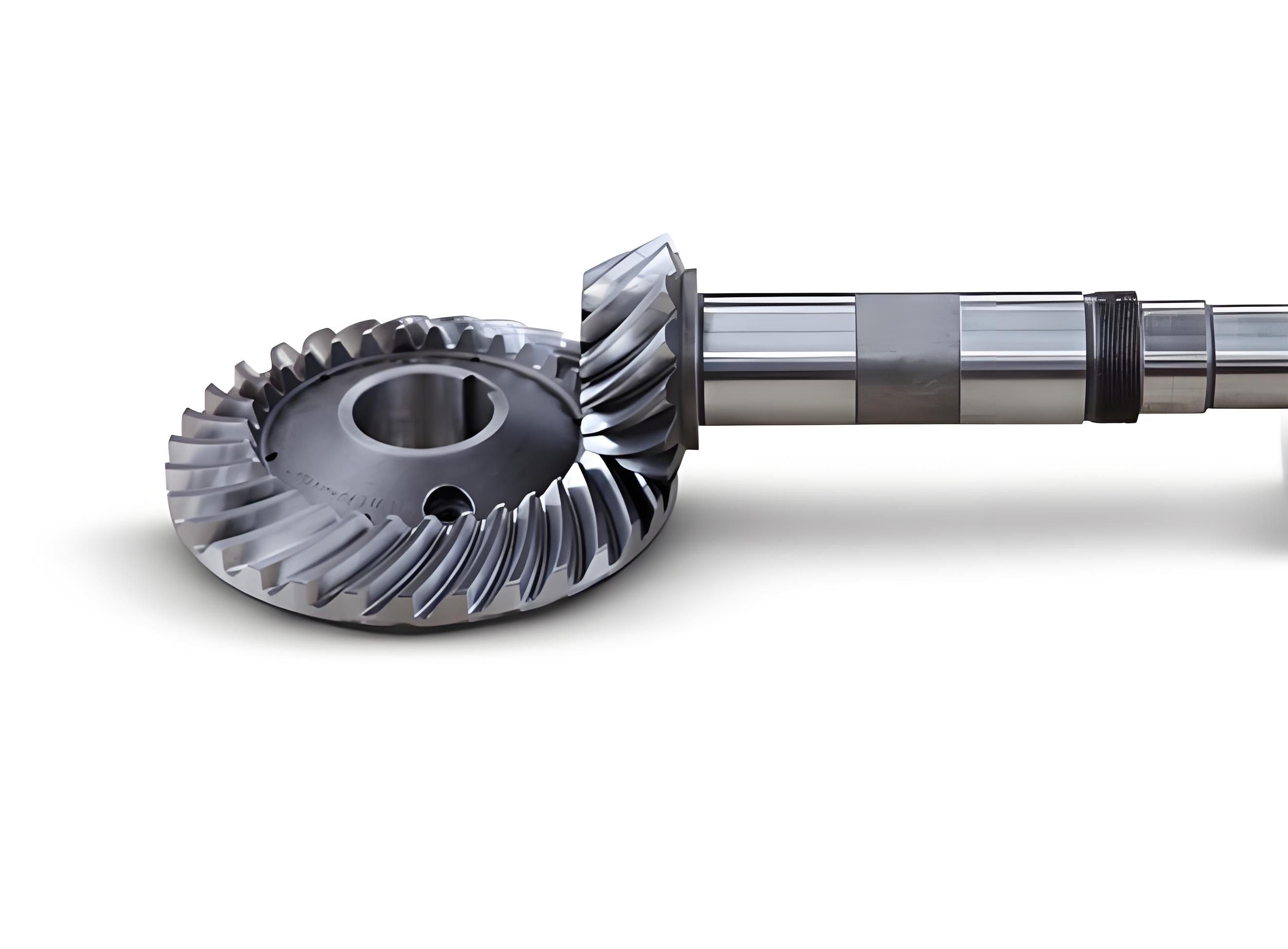Spiral bevel gears are critical components in automotive transmissions and mechanical systems due to their ability to achieve high torque transmission in compact spaces. However, their complex tooth geometry and harsh operating conditions make them prone to failures like tooth cracks, wear, and breakage. Traditional fault diagnosis methods often struggle with noise interference and feature extraction challenges. This paper proposes an intelligent diagnosis framework combining Gramian Angular Difference Field (GADF) encoding with an enhanced deep learning architecture.

1. Methodology
1.1 Signal Processing and GADF Encoding
Vibration signals from spiral bevel gears are processed using overlapping sampling to enhance data utilization. For a signal $X = \{x_1, x_2, \ldots, x_n\}$, normalized values $\hat{x}_i$ are calculated as:
$$
\hat{x}_i = \frac{(x_i – \max(X)) + (x_i – \min(X))}{\max(X) – \min(X)}
$$
The GADF transformation converts 1D signals to 2D images through polar coordinate mapping:
$$
\begin{cases}
\varphi_i = \arccos(\hat{x}_i) \\
r_i = \frac{t_i}{N}
\end{cases}
$$
where $t_i$ represents timestamps and $N$ is a normalization constant. The GADF matrix is computed as:
$$
\text{GADF} = \sqrt{I – X^2} \cdot X^T – X \cdot \sqrt{I – (X^T)^2}
$$
1.2 Hybrid Whale-Particle Swarm Optimization (HWP)
The HWP algorithm combines exploration capabilities of Whale Optimization Algorithm (WOA) with Particle Swarm Optimization’s (PSO) convergence speed. Key equations include:
WOA Phase:
$$
\vec{D} = |\vec{C} \cdot \vec{X}^*(t) – \vec{X}(t)|
$$
$$
\vec{X}(t+1) = \vec{X}^*(t) – \vec{A} \cdot \vec{D}
$$
where $\vec{A}$ and $\vec{C}$ are coefficient vectors.
PSO Phase:
$$
v_{id}^{k+1} = wv_{id}^k + c_1r_1(p_{id}^k – x_{id}^k) + c_2r_2(g_d^k – x_{id}^k)
$$
$$
x_{id}^{k+1} = x_{id}^k + v_{id}^{k+1}
$$
1.3 CBAM-ResNet Architecture
The network integrates Convolutional Block Attention Module (CBAM) with ResNet-50. Channel attention ($M_c$) and spatial attention ($M_s$) are computed as:
$$
M_c(F) = \sigma\left(\text{MLP}(\text{AvgPool}(F)) + \text{MLP}(\text{MaxPool}(F))\right)
$$
$$
M_s(F) = \sigma\left(f^{7\times7}\left([\text{AvgPool}(F); \text{MaxPool}(F)]\right)\right)
$$
| Algorithm | Accuracy (%) | Training Time (s) |
|---|---|---|
| PSO | 99.58 | 27,636 |
| WOA | 100 | 45,722 |
| HWP | 100 | 31,384 |
2. Experimental Results
Four datasets were created to evaluate spiral bevel gear diagnosis performance under different noise conditions:
| Dataset | Description | SNR (dB) |
|---|---|---|
| A | Clean signals | ∞ |
| B | Gaussian noise | 20 |
| C | Gaussian noise | 10 |
| D | Mixed noise | 10-20 |
The proposed method achieved superior performance compared to existing approaches:
$$
\text{Accuracy} = \frac{\text{Correct Predictions}}{\text{Total Samples}} \times 100\%
$$
| Method | A | B | C | D |
|---|---|---|---|---|
| CooAtten-ResNet | 100% | 98.56% | 96.98% | 94.57% |
| HWP-CBAM-ResNet | 100% | 100% | 97.21% | 95.38% |
3. Conclusion
This study presents a robust framework for spiral bevel gearbox fault diagnosis that effectively addresses noise challenges through:
- GADF-based time-frequency representation
- Hybrid HWP optimization for parameter tuning
- Attention-enhanced deep feature learning
The method maintains 95.38% accuracy under severe noise conditions (SNR=10dB), demonstrating superior performance over conventional approaches. Future work will focus on real-time implementation for industrial applications.
